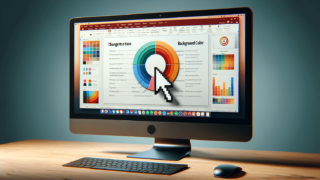
How to Present a PowerPoint
To present a PowerPoint effectively, start by preparing your presentation meticulously. Know your audience and tailor your content accordingly. Design slides that are visually appealing and not overcrowded with text. Utilize PowerPoint’s features like animations and transitions sparingly to maintain professionalism. Practice your presentation several times to ensure fluency and confidence. On presentation day, set up early, check the technical equipment, and dress appropriately. Begin your presentation with a strong opening, maintain eye contact with your audience, and engage them with questions or interactive elements. Finally, conclude powerfully, summarizing key points and inviting questions.
Quick summary
- Prepare and tailor your PowerPoint to the audience.
- Design visually appealing, concise slides.
- Use animations and transitions sparingly.
- Practice the presentation multiple times.
- Check technical setup and dress appropriately.
- Start with a strong opening and conclude powerfully.
- Maintain eye contact and engage the audience.
Welcome to LearnPowerpoint.io, where we are dedicated to offering trusted advice on all things PowerPoint. Mastering the art of presenting a PowerPoint can significantly impact how your message is received. Here’s everything you need to know to deliver presentations like a pro.
Understanding Your Audience
Before you even open PowerPoint, consider who your audience will be. Their interests, prior knowledge, and what they hope to gain from your presentation should shape your content and delivery style. Tailoring your presentation to the audience ensures that your message resonates well with them.
Designing Your Slides
Create slides that complement your talk rather than repeat it. Use a clean design with plenty of white space. Each slide should focus on one main point. Choose your colors wisely, opting for high contrast between background and text for readability. Incorporate relevant images, charts, and videos to illustrate your points effectively. Remember, less is often more.
Using PowerPoint’s Features
PowerPoint offers a plethora of features, from animations to transitions. While these can enhance your presentation, overuse can be distracting. Use them to emphasize key points or to smoothly transition between topics. Always preview your slides with these features to ensure they add value to your presentation.
Practicing Your Presentation
Practicing is crucial to delivering a seamless presentation. Rehearse your presentation multiple times, focusing not only on what you will say but also on how you will say it. Pay attention to your body language, tone, and pacing. Consider recording your practice to identify areas for improvement.
Checking Technical Setup
Arrive early to set up and familiarize yourself with the technical equipment. Ensure compatibility with your laptop and that your slides display correctly on the screen. Check your remote clicker, microphone, and any other devices you plan to use. Technical difficulties can disrupt the flow of your presentation, so it’s best to be prepared.
Delivering Your Presentation
On the day of your presentation, dress to impress but also for comfort. Start with a compelling opening to grab your audience’s attention. Speak clearly, and maintain eye contact to create a connection with your audience. Engage them with interactive questions or polls to keep their interest. Finally, close with a strong conclusion, summarizing the key points and inviting questions or discussions.
At LearnPowerpoint.io, we believe that effective PowerPoint presentations combine clear objectives, thoughtful design, proficient use of features, and confident delivery. Following the steps outlined above will help you present a PowerPoint that not only conveys your message effectively but also leaves a lasting impact on your audience.
Trending
Other Categories
- Advanced Features and Interactivity
- Basic Features and Usage
- Media and Design
- Slides and Organization
- Text and Formatting
Featured Posts
- No pillar pages found.








